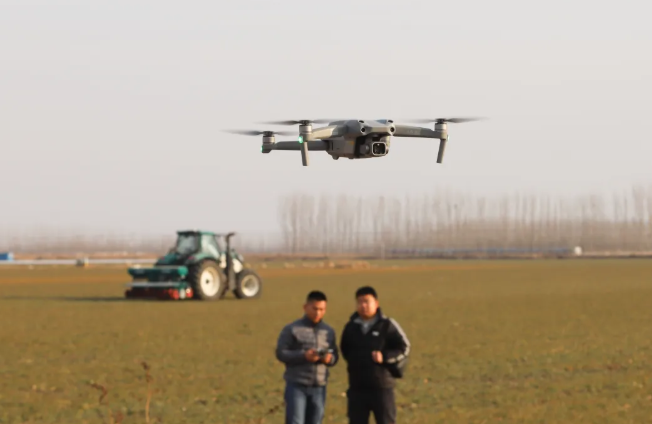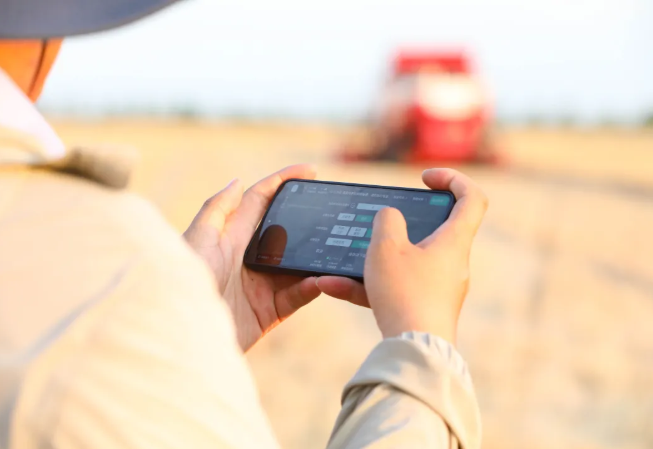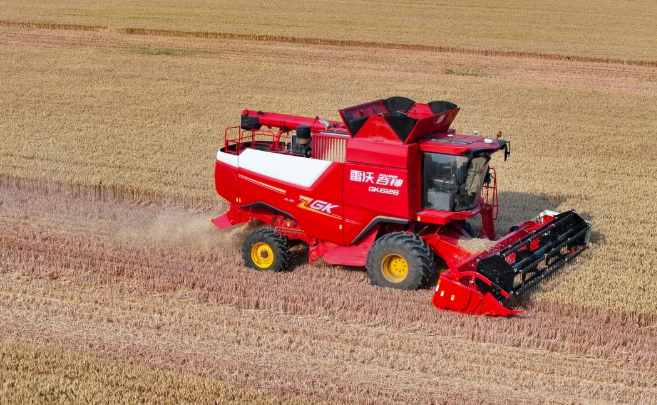When vast farmlands meet cutting-edge AI, the just-concluded summer harvest season saw Weichai Lovol deeply integrate technological innovations in smart agriculture into the entire production chain. This has established a new paradigm of agricultural production driven by technology and optimized through closed-loop processes.

Data Integration Lays the Foundation for Scientific Decision-Making
The biggest challenge in the early stages of developing the smart agricultural management platform was integrating multi-source heterogeneous data, such as satellite remote sensing, drone imagery, and field sensors. These datasets, originating from different sources and in varying formats, required precise alignment and real-time processing despite unstable field network conditions.

How to consolidate fragmented multi-source data—such as satellite remote sensing, drone imagery, and soil sensors—to provide unified, reliable decision-making support for agricultural production? Weichai Lovol adopted a hybrid "edge computing + cloud calibration" architecture, ensuring data continuity through local nodes while enhancing processing efficiency with optimized algorithms. This approach ultimately achieved efficient integration and value extraction from farmland data.
The core value of this data hub system lies in breaking down information silos, transforming scattered agricultural data into actionable insights for production decisions. For example, during wheat sowing and growth periods, the technical team integrated multidimensional data—including soil characteristics, crop growth status, weather changes, and machinery operation conditions—enabling managers to determine optimal sowing times and formulate precise spring field management plans. This granular data support effectively eliminated the guesswork of traditional experience-based planning.
Smart Agricultural Machinery and AI Real-Time Synergy Drive Precision Execution Across the Chain
How to accurately implement scientific operational plans? Traditional agricultural machinery navigation could only answer the question of "where," but Weichai Lovol's technological breakthrough has empowered machinery with the ability to "self-express," achieving "self-perception of operational quality."
This innovation was vividly demonstrated during the summer harvest at Lovol’s smart farms. During harvesting, the Lovol GOSUM GK6126 unmanned harvester, equipped with various intelligent sensors, strictly followed the "optimal harvesting plan" issued by the smart agricultural management platform. It autonomously completed tasks such as harvesting, grain unloading, and obstacle avoidance while simultaneously transmitting real-time yield distribution data back to the platform. In essence, this "talking" smart machinery system allows managers to not only track the location and trajectory of equipment but also accurately evaluate operational outcomes, such as yield maps and harvest loss rates.
Based on the precision execution of smart machinery during harvesting, the AI large-model system dynamically optimized subsequent sowing prescriptions in real time by incorporating field feedback on operational quality, sensor data, and the latest weather forecasts. Similar to the harvesting phase, operational data from smart machinery during sowing was again fed back into the platform. This interconnected process has enabled Weichai Lovol to build a sensing network covering all stages—sowing, fertilizing, tillage, and harvesting—creating real-time synergy between machinery and AI models to drive precision execution across the entire production chain.

Closed-Loop Intelligent Evaluation Enhances Fine-Grained Operational Quality Control
The application of smart agricultural achievements extends to operational quality assessment. For instance, during corn sowing, the system uses image recognition technology to detect missed seeding in real time. In smart plant protection, combining trajectory data with spray volume enables precise monitoring and control of pesticide application. During harvesting, intelligent terminals on machinery can obtain real-time harvest loss rates and adaptively adjust operations to balance efficiency and loss reduction.
This dynamic, process-embedded monitoring has fundamentally transformed the passive, post-hoc inspection model of traditional agriculture, elevating operational quality control from a coarse to a refined level. This lays a technical foundation for improving agricultural product quality.
From breakthroughs in foundational smart agriculture technologies to innovative applications across the entire agricultural production chain, Weichai Lovol’s smart agriculture practices serve as a compelling case study of AI’s deep integration with Chinese agriculture. It has successfully bridged the "last mile" from technological innovation to practical application and value creation in smart agriculture.